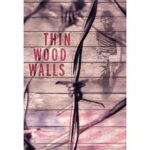Have a Plan
Okay, I’ve put some thoughts together, with the goal of getting myself deeper into writer’s mode and providing other folks who are interested in reading and/or writing with a peek inside my writer’s brain (Danger! Danger!). If you’ve thought about writing, or you’ve messed around with writing, or you’ve already ventured further into the often-wacky world of writing and publishing, you’ll find something for you here over the next few weeks. If you prefer that someone else write the stories you enjoy, there will be something for you, too.
But today we’ll start with some basics. Pre-COVID, I did a lot of school visits, and many of the schools I visited used a writing tool called Seven Traits. So when I talked to kids about writing, I tried to incorporate the Traits principles they were learning into my presentations. I found that they nicely complemented what I was doing. They’re basic, but there’s nothing wrong with that. You gotta walk before you can run, right?
Before I started writing in earnest (way back in the early nineties), I was “between jobs” and enrolled in a technical writing course. What we started with was a refresher on the stuff we were all supposed to have learned in high school and college, but maybe didn’t pay attention to it or lost track of what we’d been taught. I didn’t finish the technical writing course, but I did complete the “refresher”. And for a writer who had gotten kind of fuzzy on stuff like grammar and usage and syntax, it was amazingly helpful.
So we’ll start with the Seven Traits and go from there. Here they are, with explanations:
1) Ideas–Have I picked a good one? Let it grow? Does it have a beginning, middle, and end?
2) Organization–How’s my beginning? Will it grab the reader (essential once you start submitting) and get the story off to a running start? Are the other scenes in the best possible order?
3) Voice–Does the story read like a newspaper article on an increase in hog prices, or does it have a captivating personality with an attitude that shines right through?
4) Word Choice–Are my words fresh and powerful? Do I have a lot of action-packed verbs, right-on nouns, and sharp-edged adjectives? Do my pronouns refer back clearly to the correct noun? Have I used concrete (showing) language?
5) Sentence Fluency–Do my sentences flow with variety of length, beginnings, and structure? Do they fit together well?
6) Conventions–How’s my spelling? Punctuation? Grammar? Does my paragraphing make sense? Am I using quotation marks properly? Paragraphing dialogue?
7) Presentation–We’re well into the computer age, so penmanship and smudged papers really aren’t a thing anymore. With only a few exceptions, everything gets submitted electronically. Still, there are some remaining guidelines. The font should be conventional (size 12, and Times New Roman seems to be the most acceptable now), the submission should be double-spaced, and the margins should be one-inch.
Next time (next week) I’ll talk more about critical reading and its role in better writing.
 Previous Post
Previous Post Next Post
Next Post




